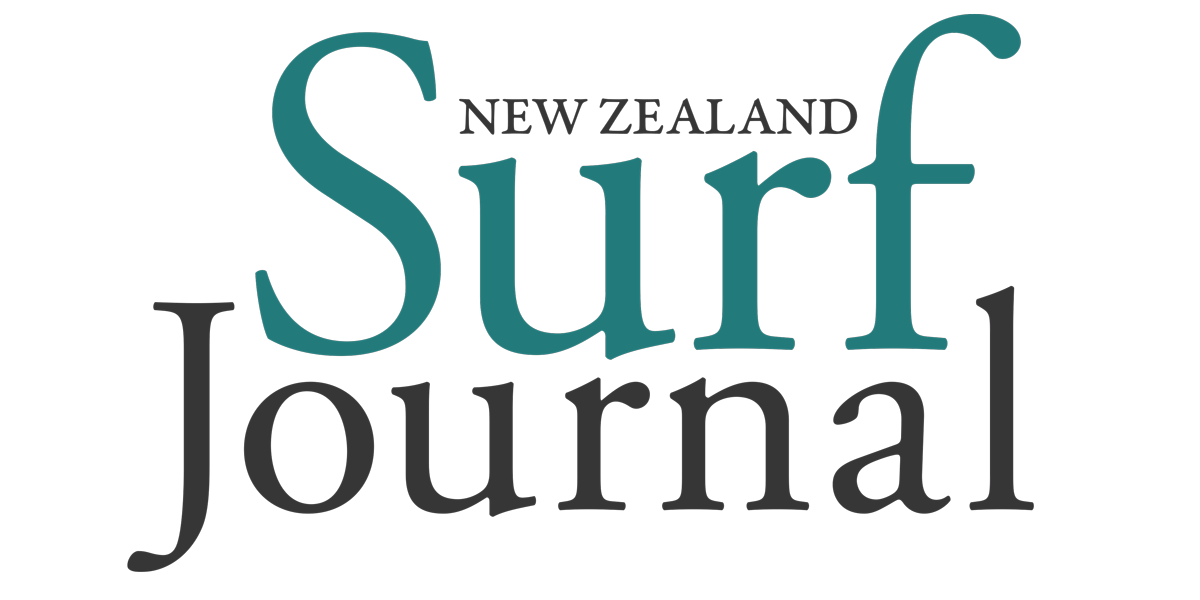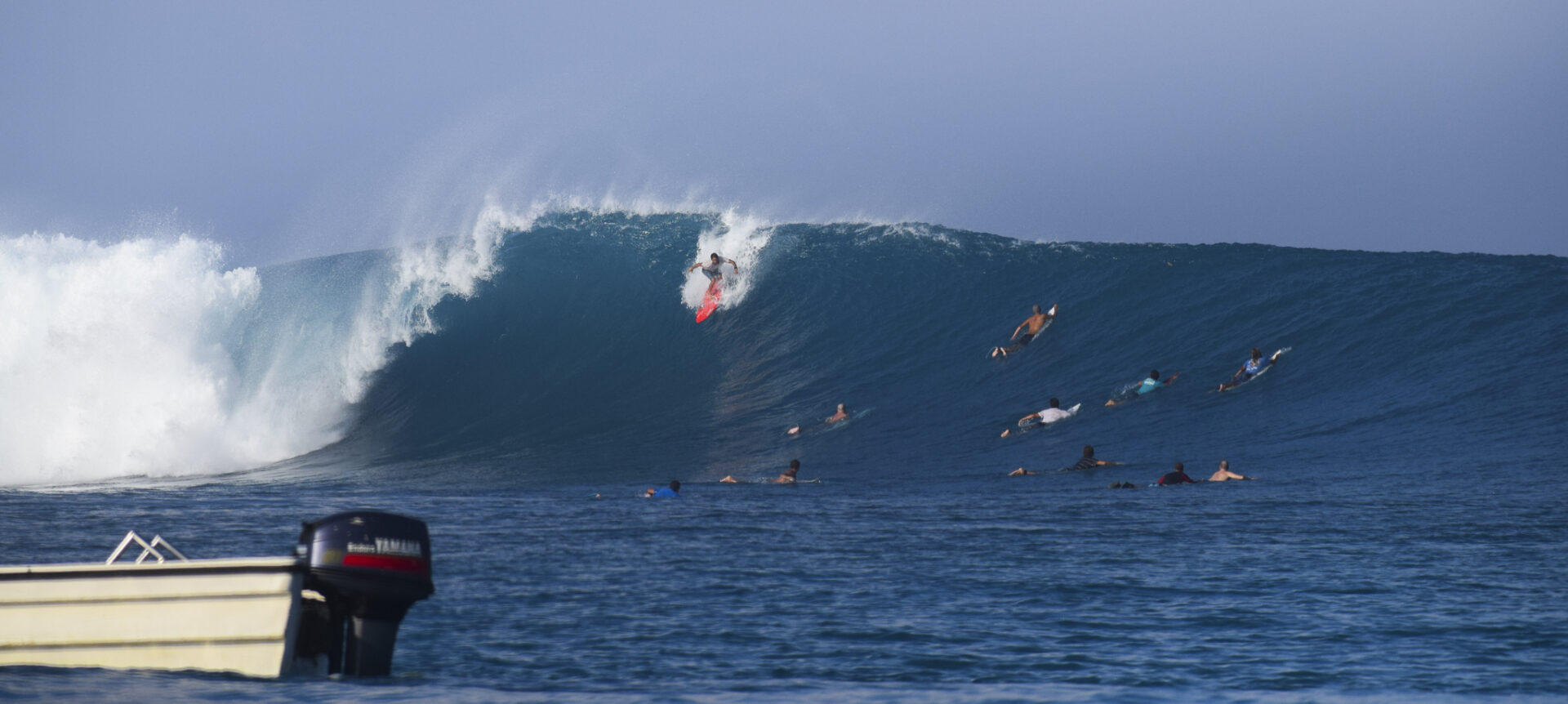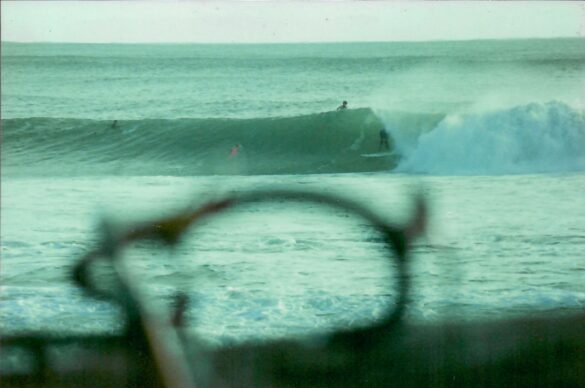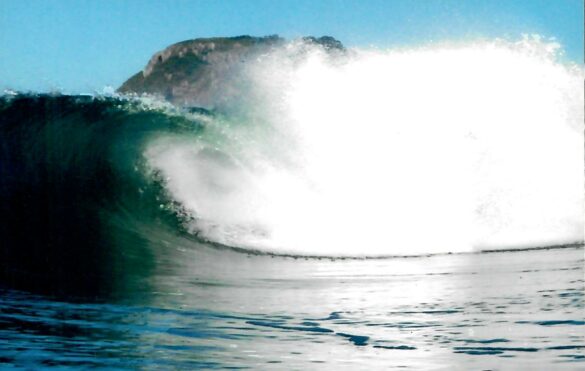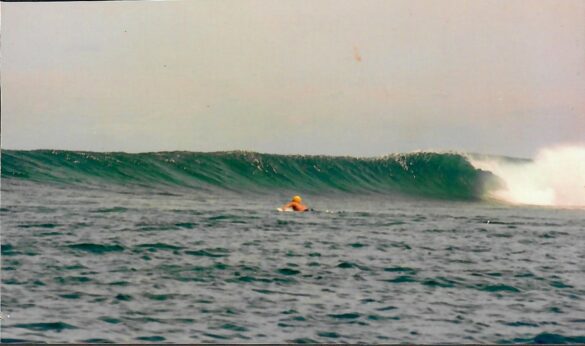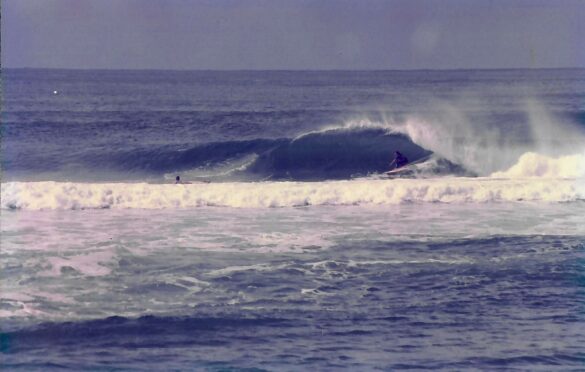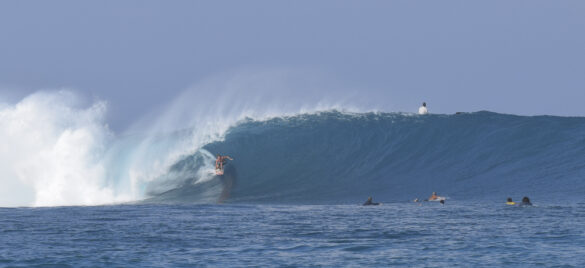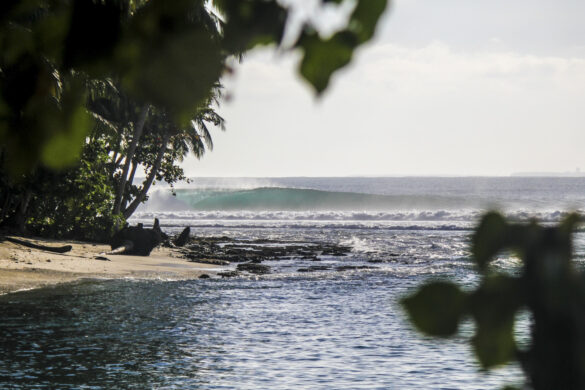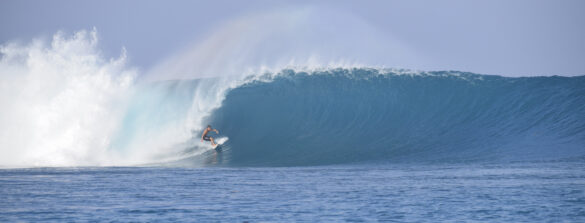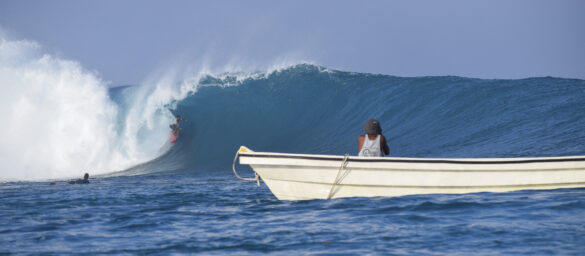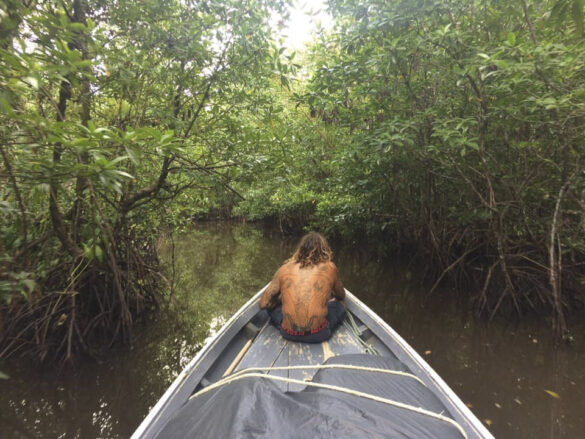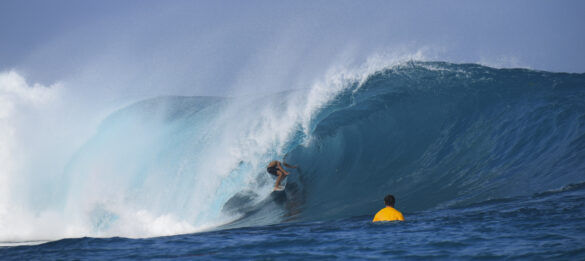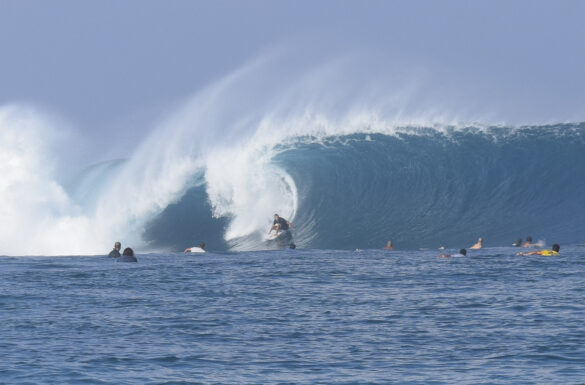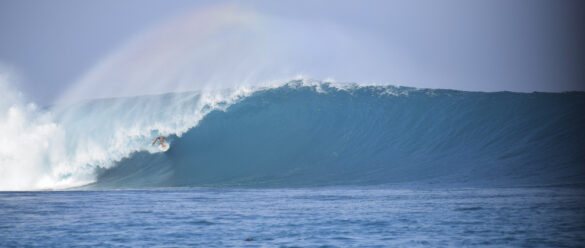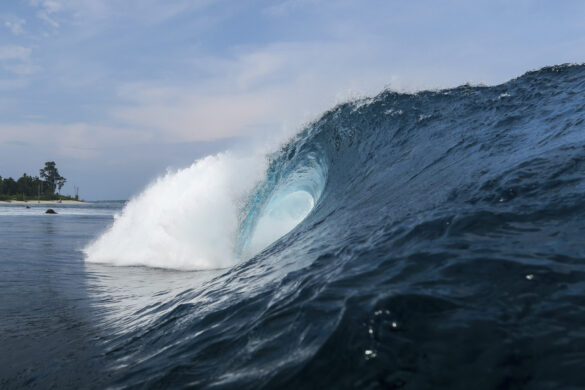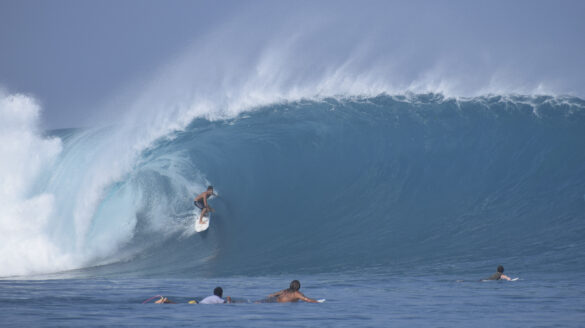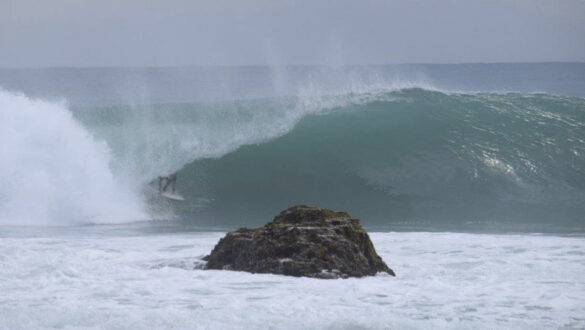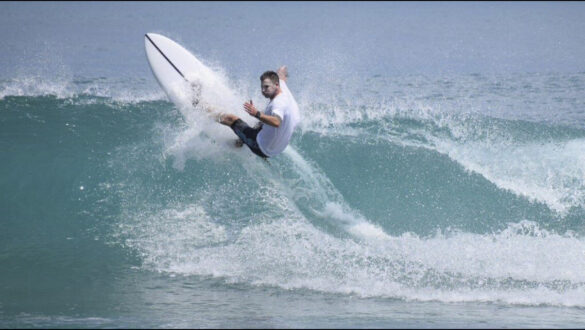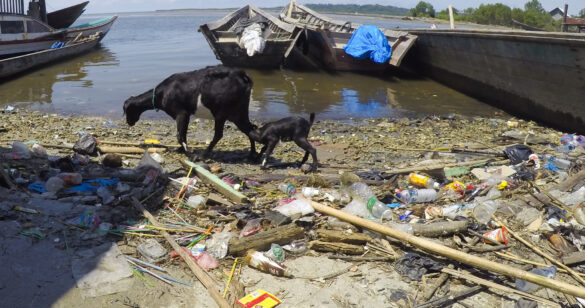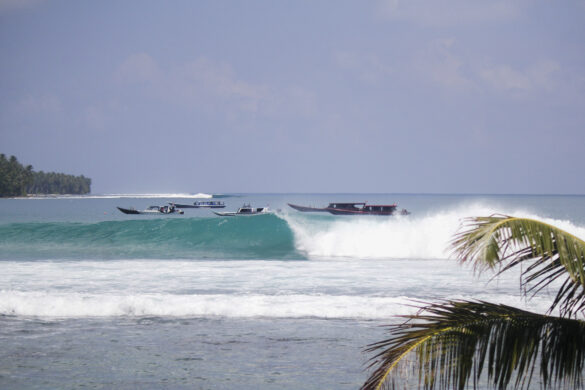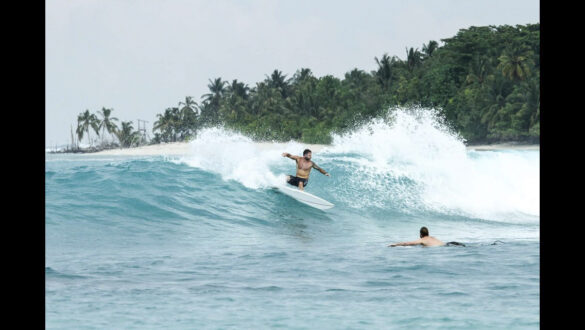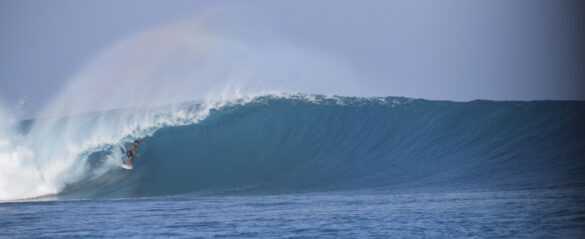A self-described “Average Joe”, Leigh Sullivan, shares his journey from Burleigh Heads to Mount Maunganui as a pre-teen, and his exacting discovery of surfing, which led him around the world and eventually to the Mentawais 45 years later.
I was 11 years old when we moved from Burleigh Heads in Australia to Mount Maunganui, a small coastal town with a population of 7000 in the North Island of New Zealand in 1973. A single parent family, there was my mother, myself and my younger brother and sister.
Ironically, before moving to The Mount, I spent my time giggling and chasing girls around the Burleigh Headland, blissfully unaware of the liquid treats that would have been winding through the Burleigh Heads Cove back then.

After moving around a few rentals for a couple of years, we ended up on the corner of Marine Parade and Clyde Street across the road from the beach. It was a back unit of three, built in the early ’50s, and had seen better days. Flaking paint and a leaking roof, it was about as windproof as a set of fishnet stockings. My mother called it “rustic” but dilapidated was closer to the truth. It was the ’70s, we were a single-parent family, we were poor, but for me, there was always the beach. It never got boring.
Flaking paint and a leaking roof, it was about as windproof as a set of fishnet stockings. My mother called it “rustic” but dilapidated was closer to the truth. It was the ’70s, we were a single-parent family, we were poor, but for me, there was always the beach.
Days were spent body surfing then warming my body in the grainy white sand. On flat days I would burrow my feet into the low tide sandbank to find a feed of tua tua, with my toes, trying to avoid the claws of the vicious “toe nipping” sand crabs. Then I’d crack two shellfish together to break into the thick shells and suck out the squirming shellfish. I’d repeat this process for 15 minutes. Lunch was sorted.
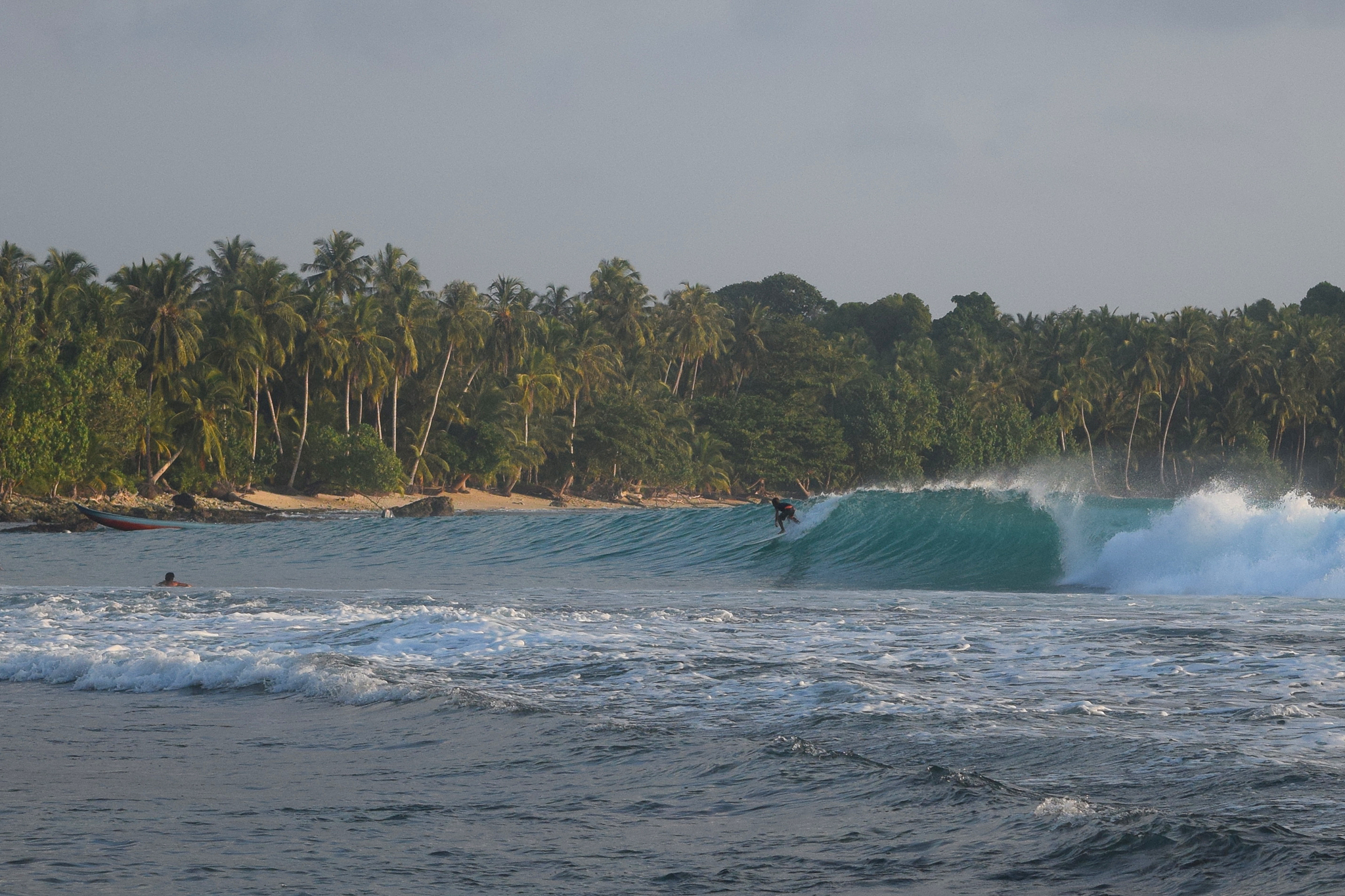
Oddly, I was the black sheep in this regard, my family not at all interested in the beach, the sea or the plentiful bounty that lay metres from our doorstep. I never once saw my mother step foot into the sea in all the years we lived on Marine Parade.
I have just turned 60 years old. The thought continually surprises and scares me. A cliche about the speed at which this has happened is pointless. I can still hear the words of my grandfather, whom I spent many of my younger years living with: “Boy, this is the only life you’re gonna get. It aint no dress rehearsal, so make the most of it”.
I can still hear the words of my grandfather, whom I spent many of my younger years living with: “Boy, this is the only life you’re gonna get. It aint no dress rehearsal, so make the most of it”.

One rainy afternoon in January, when I was nearly 13, I crawled under the units where we were living.
Beneath the cobwebs, dust and sheets of rusty corrugated iron, partially buried in the sand, was a large, heavy old surfboard. I tugged and dug for an hour to get it out. It was a dusty old “Del” surfboard, circa 1960. It was ochre-orange in colour and 10-foot long. It had multiple dings in the rails and midway down the deck there was a ragged A4-sized piece of fibreglass missing, right where you had to lie to paddle the board. It weighed at least 35kg when dry, but you could add at least another 10 after a weekend of it soaking up the Pacific Ocean. I fell in love with it immediately. It was far too heavy for me to carry all the way to the water’s edge, so I would drag it across the grass and sand by the nose and spend all day grovelling around in the shorebreak.

It had multiple dings in the rails and midway down the deck there was a ragged A4-sized piece of fibreglass missing, right where you had to lie to paddle the board. It weighed at least 35kg when dry, but you could add at least another 10 after a weekend of it soaking up the Pacific Ocean.
Surfing wetsuits in New Zealand were the thing of dreams in the early 1970s. The few local surfers all wore 7mm dive suit tops, the ones that would have the crotch flap hanging down and would swing between their legs as they rode waves.

I would wear a tee shirt in the summer to hopelessly try and negate the inevitable ripped open stomach if you nose dived and slid across the ragged hole in the deck. In winter, I wore a lime green woolen jersey that would stretch to my knees when it got wet and I told my shivering, purple self it kept me warm.
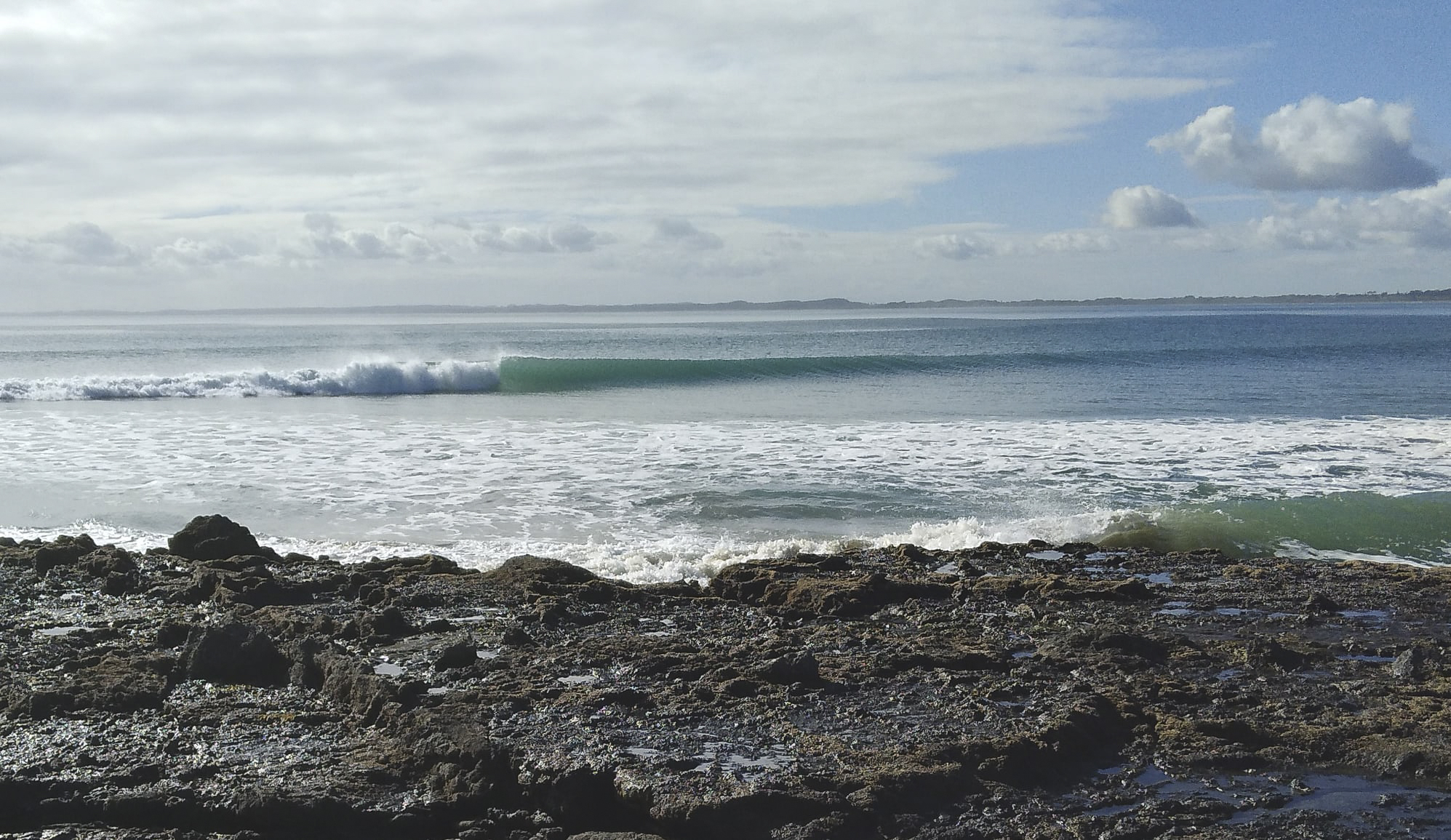
I had no legrope and it was starting to scare the crap out of the locals when I’d lose my board trying to catch my first unbroken wave. It would bronco through the lineup like an angry thing, sending them paddling helter skelter to avoid getting battered by 35kg of rampaging longboard.
I drilled a hole through the huge fin, tied a piece of rope to it and then tied an old rugby sock to the other end which I knotted around my ankle. I now had a legrope. It solved the angry surf mob issue but I spent hours getting towed along under water as my puny 35kg frame was no match for the runaway brute when I fell off.
It solved the angry surf mob issue but I spent hours getting towed along under water as my puny 35kg frame was no match for the runaway brute when I fell off.
Money was always tight in a single-parent household, and a secondhand surfboard was well down the list of priorities. I got a morning job delivering the New Zealand Herald newspaper before school and also did a milk run after school. I saved every cent for a year until I had $35.00 for a secondhand 6’5” pintail Greyseal surfboard with channels and lime green rails.
It went like an absolute pig in the typical Mount short-period wind slop. I kept it for a year until I had more savings then rode my bike down to the new “Island Style Surf Shop” and traded up for a new Saltwater Surfboard. A 5’6” swallow-tailed twin fin. Canary yellow with sparkly blue rails. Yeah, boi!
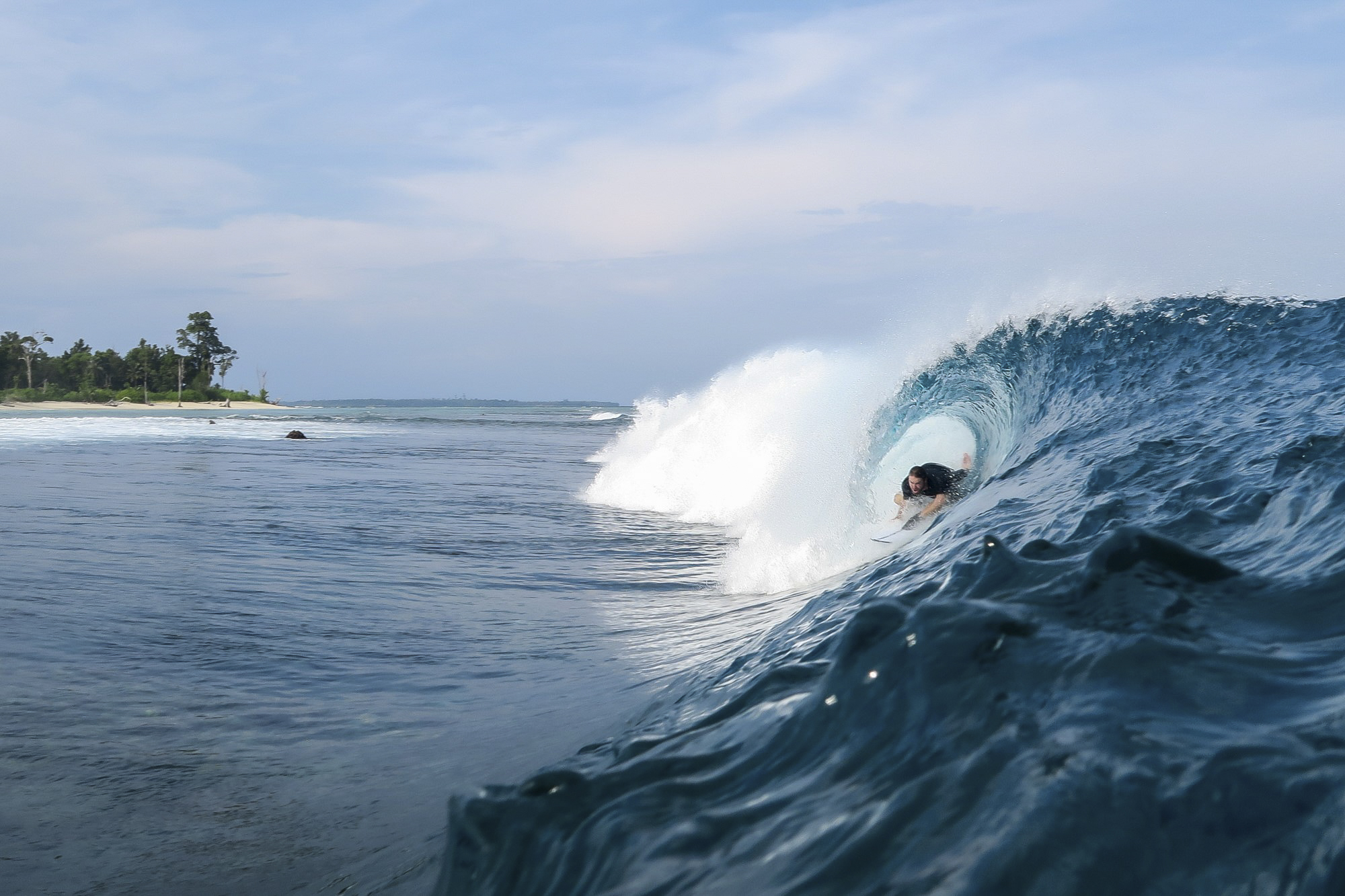
Surfing in the 1970s wasn’t like it is now with all the razzle dazzle of live streaming, big brands and big bucks. Back then there were far more detractors than admirers of the sport. Long-haired, unemployed druggies was the general view of surfers, and to be fair, there were some that fitted the description. We were only 14 years old but we were already pigeon holed.
Teachers and adults were constantly telling us the same path beckoned if we persisted in surfing.
It fell on deaf ears, I loved it too much. I began truanting school, leaving home early while my mother slept and smuggling my board into the dunes. Then I’d bike to school, get marked off on the morning roll and then bike back to the beach to surf all day.
I was living up to their expectations, you might say.
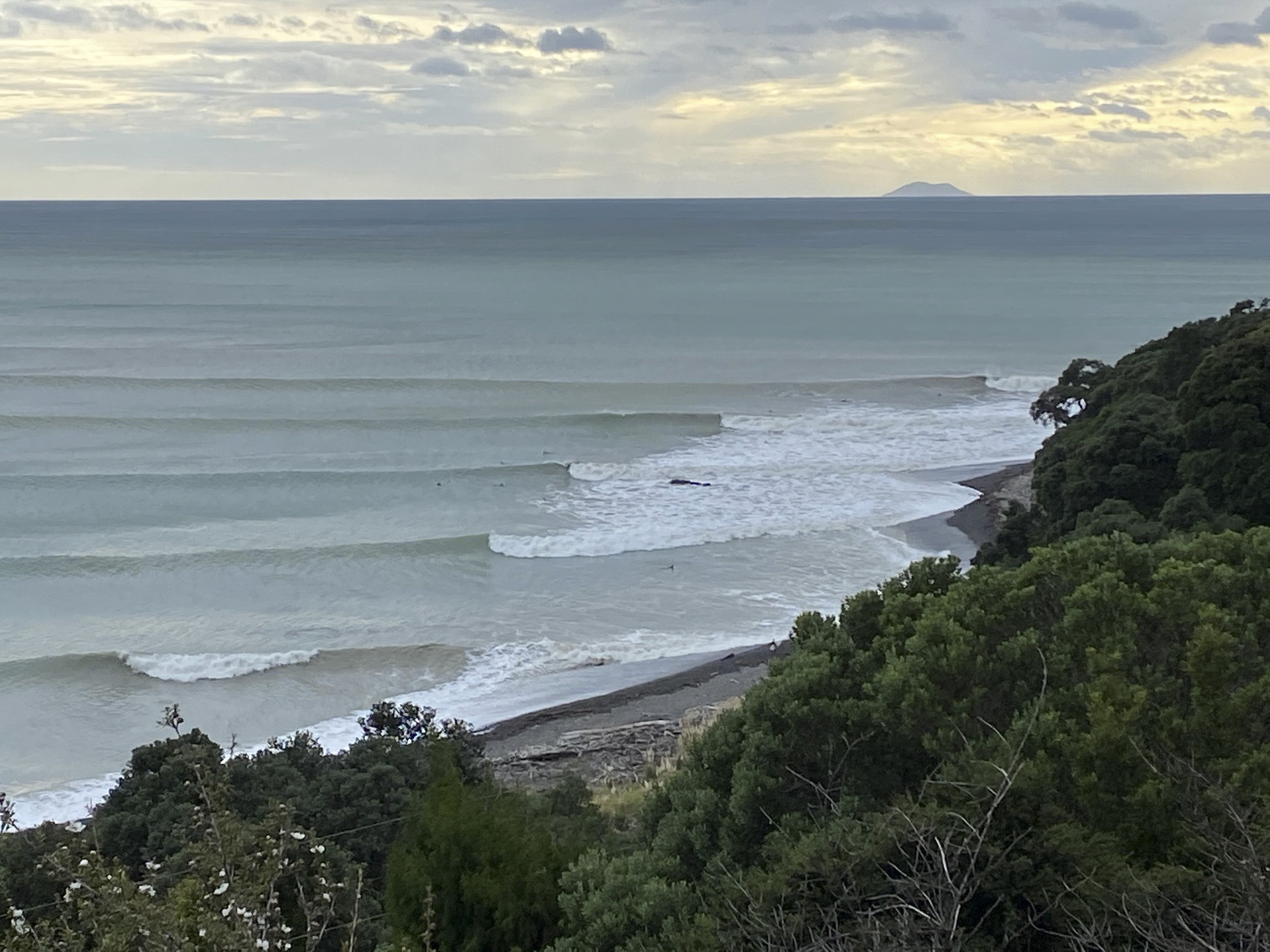
I left home and quit school on the same day … at 16. I got a flat with a mate and scored a job on a local fishing boat catching and filleting fish for the next three years.
I left home and quit school on the same day … at 16. I got a flat with a mate and scored a job on a local fishing boat catching and filleting fish for the next three years.
Then I did a 12-month stint doing night shift at the local salt works where I got to crush big bits of salt into smaller bits of salt. Mind-numbing work but it enabled me to surf during the day and save $1000 for a one-way ticket to England with $400 of traveler’s cheques in my pocket.

I traveled the world for 16 years in the ’80s and ’90s, driven by images of exotic surf breaks in surfing magazines. I held 40 various jobs in 20 countries and islands, from washing dishes and pouring alcohol, to breeding tropical goldfish and making supermarket chain sausages, (a spine-chilling story in itself). All the while making friends and sampling the different waves and cultures on offer.
I traveled the world for 16 years in the ’80s and ’90s, driven by images of exotic surf breaks in surfing magazines.
Some of the most memorable were the United Kingdom with the beauty of the Cornish coastline, the quaint fishing villages, rugged cliffs and powerful Atlantic waves. Europe, the Middle East, Rottnest Island in Western Australia and the South Pacific: Fiji, Samoa, Tonga and the Cook Islands.
Looking back, it wasn’t just the wave, but the location and the positive vibe. These were the things that set them apart from the rest and form perfection in your memory banks. Raglan, Kirra, Snapper Rocks, Greenmount, Noosa, Lennox Head and Byron Bay in Australia are all amazing, but hungry, aggro crowds could often add a negative vibe.
Aotearoa, “Land of the Long White Cloud”, beckoned in the late ’90s and I returned home to New Zealand, settled down and had two sons.

It was about this time the Mentawais started making its debut in the surf media. Photos and videos of Macaronis, Lance’s Right and Rifles were everywhere to constantly drool over. A single minimum-wage pay packet, rent and raising two kids meant it was the stuff of dreams. And for 18 years it was.
For the past 15 years I’ve been a high school teacher. I went to University at 39, getting a degree in Marine Biology. I was getting nowhere on minimum wage jobs and I wanted to spend as much time with my two young sons as possible. As a teacher, the better income and the 14 weeks paid holiday every year was perfect for trips to the South Pacific islands, Raglan, the East Cape and Taranaki to surf and camp with my kids. You can’t buy that sort of thing, genuine quality time with them. They grow up so freakin’ fast.

Seeing both my sons catch their first “proper” waves truly brought tears to my eyes. The pure elation and stoked looks on their faces still lives with me today. “Do the mahi, get the treats” as they say.
It brought back the memory of my first wave in 1974 when I was 13 years old, the acceleration and speed on the face and the smoothness of the rail slicing through the water after so many bouncy whitewash waves. Getting to the end of the wave and laughing in pure joy. I was hooked from that moment. I still froth now, 45 years later. It’s a drug and you become addicted to it.

The Mentawai Islands were always on my mind. My mates shared that dream. I finally got to the Mentawais when I was 58. To push yourself, it pays to hang out with frothers. The small crew I went with were 17 years my junior and they weren’t there to go shopping or get a tan. It was just as much of a buzz watching mates dropping into heaving turquoise barrels, pulling big backside hooks and copping their share of floggings.
I finally got to the Mentawais when I was 58. To push yourself, it pays to hang out with frothers. The small crew I went with were 17 years my junior and they weren’t there to go shopping or get a tan.
I told work I was going for two weeks, when in fact we were going for nearly a month. The day before I was due back at work as a high school teacher, I emailed them about contracted illnesses, broken down ferries and missed flights. Then hit the send button and headed out to Hideaways with the boys for the arvo session knowing I had another 10 days.
As I said before, it’s a drug and you become addicted.

The small camp that became home is called Beng Bengs and is smack in the middle of more left and right surf breaks than you could shake a dead mahi mahi at … among them Kandui, E-Bay, Hideaways, Rifles, Burgerworld, Beng Bengs, Little Nias, Pitstops, 4 Bobs and A Frames.
It became a ritual every day: up at 5.30am, force down a mug of hideous Sumatran coffee and eat four slices of toast. Surf until lunch, eat again, surf all arvo, eat again and then fall asleep.
During the whole trip it was never flat and one day we watched Kandui going ballistic. Sitting in the channel and watching a dozen madmen paddle into huge mountains of water. It looked like suicide. The shaking of our little wooden boat as the waves exploded onto the reef was a humbling experience. One in 20 were being made as the wave just kept serving up pitching, thick-lipped section after section.
The beatings were horrifying but the glory was palpable to those who threaded the gauntlet.
Sitting in the channel and watching a dozen madmen paddle into huge mountains of water. It looked like suicide. The shaking of our little wooden boat as the waves exploded onto the reef was a humbling experience. One in 20 were being made as the wave just kept serving up pitching, thick-lipped section after section.
During the trip I had the wave of my life … and also the flogging of my life. It’s hard to say which is more memorable, the wave or the flogging.

I have an internal list of my five most remembered waves. The ones you replay in your memory banks when you’re surfing shitty onshore slop or as you fall asleep because of how mind blowing they were. For me they are:
• Frigates Pass in Fiji
• Currumbin Alley on the Gold Coast
• Lennox Head in NSW
• Undisclosed 400m+ right hand point in New Zealand (sorry, location cannot be revealed. Ever.)
• And now, Goodtimes in the Mentawais
Goodtimes is a long peeling left hander on the island of Siberut. I had never even heard of it until we got there. Two days before we left home for New Zealand another solid swell pumped up through the Ments. Siberut faces directly into it.

It was early morning and cloudy, giving the ocean a dark green hue. The break was empty, seaspray hanging like mist in the air. Nothing but jungle and beach, and a bit spooky. It was hard to gauge the size from the boat. Tommy the boat man wasn’t willing to go in any closer. So the four of us paddled in the 150 metres from the anchored boat. Easing in so we could suss the take off area, we watched a set come hucking top to bottom down the reef. The first turquoise wave was a solid, thick 6ft with the following waves of the set getting progressively bigger.
Easing in so we could suss the take off area, we watched a set come hucking top to bottom down the reef. The first turquoise wave was a solid, thick 6ft with the following waves of the set getting progressively bigger.
One of the crew, Elliot stroked into a thick, solid wave and was gone from sight until we saw him flick out into the channel 300 metres down the line. He paddled back out, scratched into another thicker inside one and blew it on the bottom turn, and got held down for 10 seconds, his board tombstoning in the whitewater. He finally surfaced, gasping for air and the imagery did nothing for my confidence.
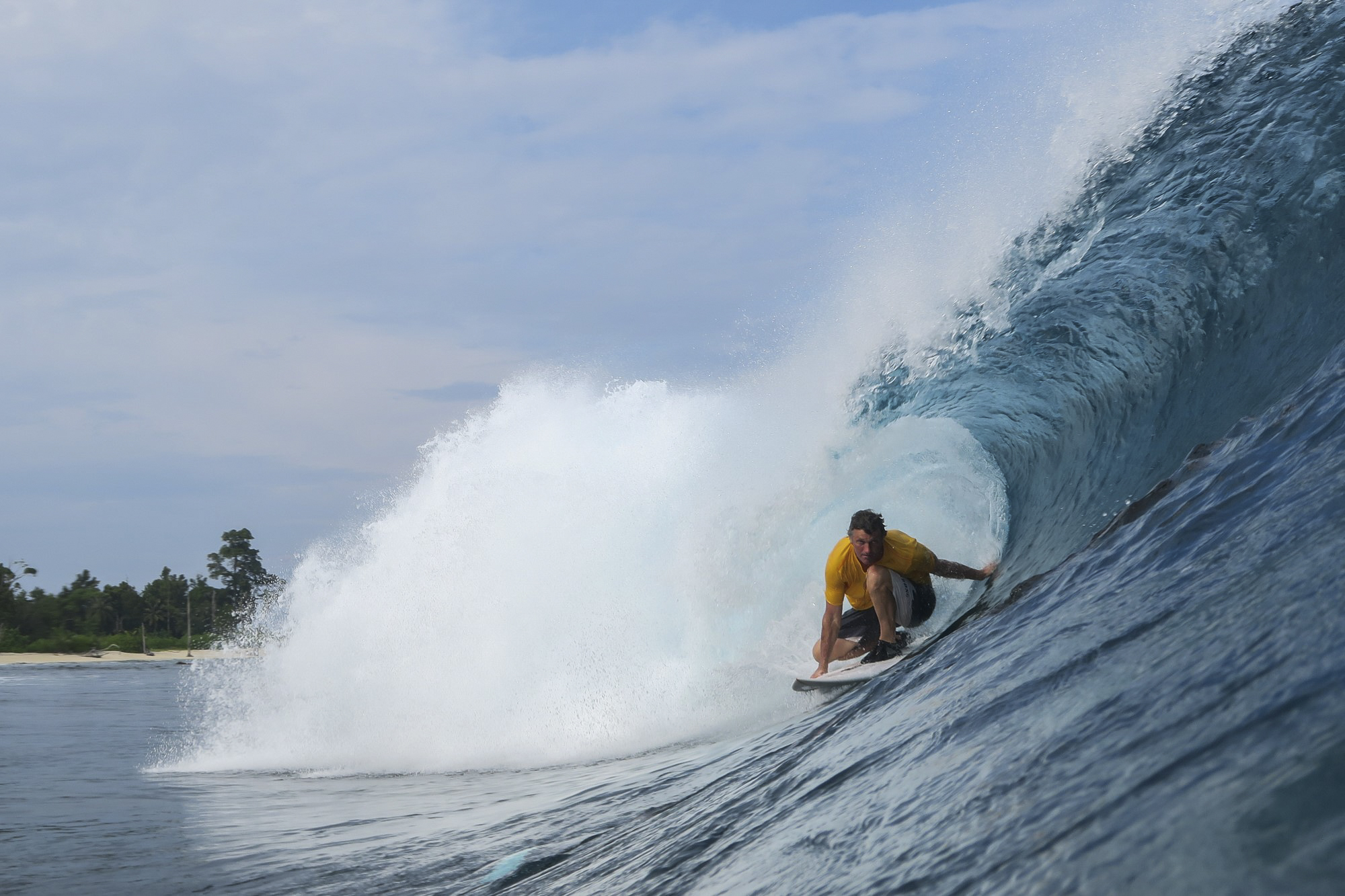
The others had all picked off a wave each and then they called me into the next set. My heart was beating like a humming bird, a familiar voice in my head; “Boy, this is the only life you’re gonna get. It aint no dress rehearsal, so make the most of it”.
As the next set wave approached, I positioned myself inside and paddled into it as it came jacking down the reef. Four hard strokes and I felt the wave grab hold. The point of no return. Getting into it a fraction late made for a huge swooping backhand drop and my board only just stayed in contact with my feet. I hit the bottom going Mach 1 and did a fast, long drawn out bottom turn up onto the face, and it briefly backed off.
“Sweet, a big fat wall”, I thought. And for a millisecond, a sense of relief before the wave found the reef again, started to wall up and shank down the line. Instinctively I knew I couldn’t straighten out, I would have been annihilated onto the shallow coral. I set my line and watched the wall in front of me rear up and start to pitch. In my 45 years of surfing, I’d never gone so fast on a surfboard. So fast, that I leaned over and grabbed my outside rail, not to look slick, but to hold on for my totally insignificant life.
Instinctively I knew I couldn’t straighten out, I would have been annihilated onto the shallow coral. I set my line and watched the wall in front of me rear up and start to pitch.
Time actually shifted into slow motion. I remember looking up over my left shoulder and seeing the most intense aqua blue lip feathering out above my head. Looking down the line and seeing a bird standing one legged on an exposed coral head on the inside reef. A little fluorescent blue and yellow fish jumping in front of my board. The different coloured coral heads as the face of the wave met them and how ridiculously shallow it was. The board chattering over the tiny ripples up the face and the leg of my boardies sliding up my thigh and cutting into my left testicle.
After a moment, a heartbeat, a freakin’ lifetime, I flicked out 300 metres down the line. I could see the others out the back with their arms raised and hooting. I’ll never forget that wave, that setting, the euphoria.
“It’s a drug and you become addicted”
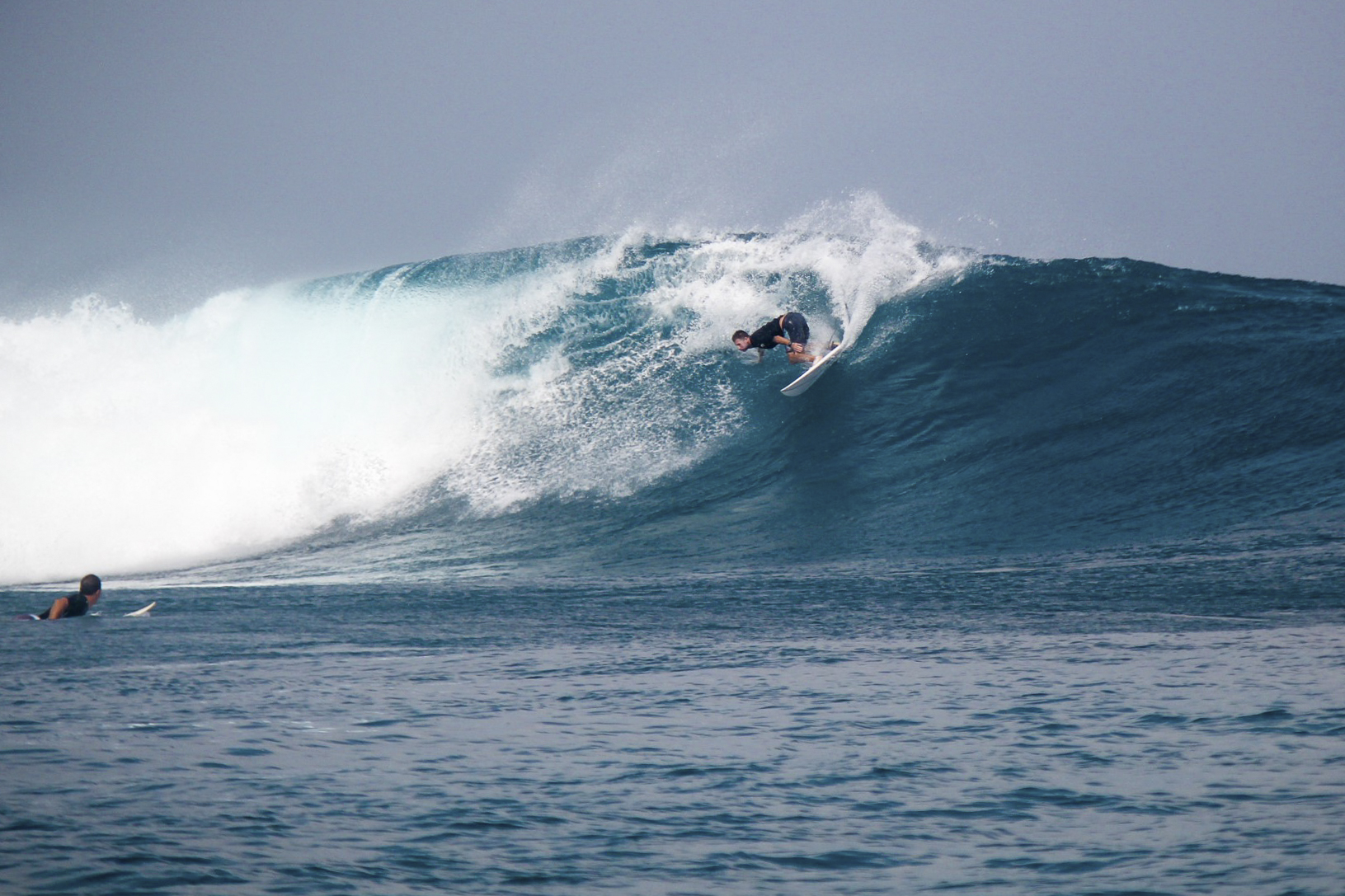
I’m not a believer in god, but as I hurtled down the line, well, it was almost a religious experience. I’ve mind-surfed that wave countless times since then. Sumatra has so many stunning locations and quality waves, they all blur together after weeks of non-stop surfing. But that one wave made the trip extra special. One of the best and scariest waves of my life.
The beating of my life came at Hideaways. Thick, angry 6ft+ sets were rearing up, pitching top to bottom and rattling down the shallow reef. There was a pack of about 20 alpha males on the peak, all looking for the best waves for the photographers.

I decided to sit inside them and pick off the ones that went underneath them or the ones they fell on. It was a reasonable plan and I got a couple of nice smaller inside ones. Then, as it always does, a big sneaker set came.
The horizon darkened and changed shape and I knew I was way too far inside. I paddled hard and wide to try and miss the worst of it. I saw the first wave bearing down and starting to pitch, a solid 6ft and it looked so freakin’ beautiful as I stared at the coloured coral heads through the ridiculously clear approaching wall. I duck dived and just scraped under it, only to surface and see the second wave feathering 30 metres in front of me. Bigger and thicker than the first, it was so beautiful and perfect and so terrifying all at once. I paddled hard and pushed into a deep duck dive. I remember opening my eyes, seeing the reef, not moving and thinking I’d made it. Then in slow motion I felt myself getting pulled backward. Faster and faster and then upside down. I let my board go and went into the foetal position, legs pulled in and arms over my head. I went limp and stayed as calm as I could. I got pinballed down the inside section of Hideaway’s reef for a good 10 seconds. My forearms, shins and knees ricocheting off the reef, my 2mm vest wearing some gouges but at least it wasn’t to my body.
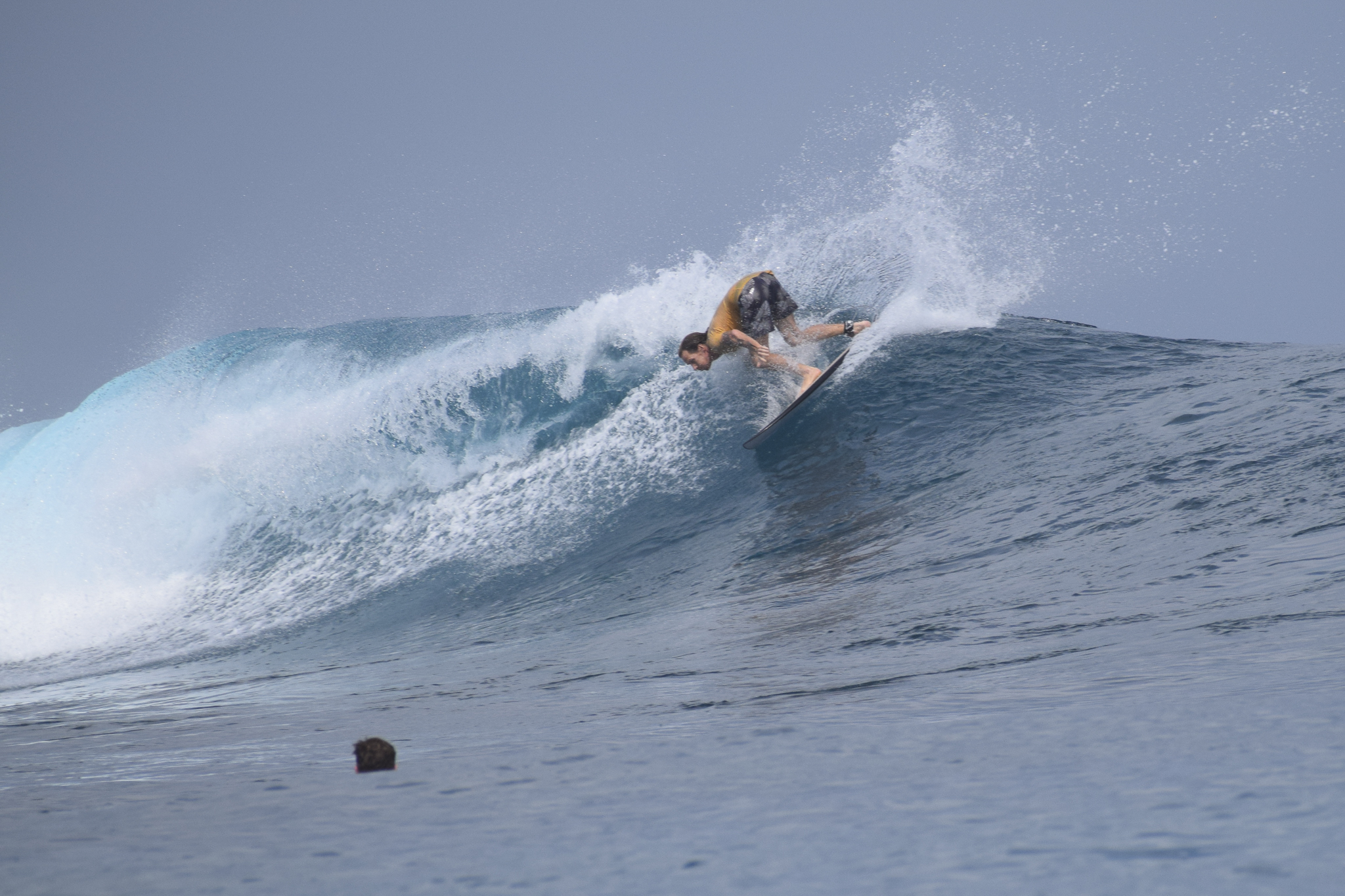
I took another two waves on the head and surfaced 70 metres down the line, gasping for air and bleeding from several outlets. I could see chunks of coral in my right knee and my forearms and shins were bleeding but the head and body were okay. I gathered my board and tip-toed across the inside coral to the channel and took a minute to lick my wounds and flick out the bits of coral.
I remember opening my eyes, seeing the reef, not moving and thinking I’d made it. Then in slow motion I felt myself getting pulled backward. Faster and faster and then upside down. I let my board go and went into the foetal position, legs pulled in and arms over my head. I went limp and stayed as calm as I could. I got pinballed down the inside section of Hideaway’s reef …
That hold down had really rattled me. Paddling slowly back past the anchored boats to the lineup, Tommy, our boatman looked down at me with a broad Sumatran smile and just shook his head slowly in sad eyed wonder as I paddled back out past the boat. Back in the lineup the bleeding continued so I half-heartedly caught the next small wave that came through and limped back to the boat.
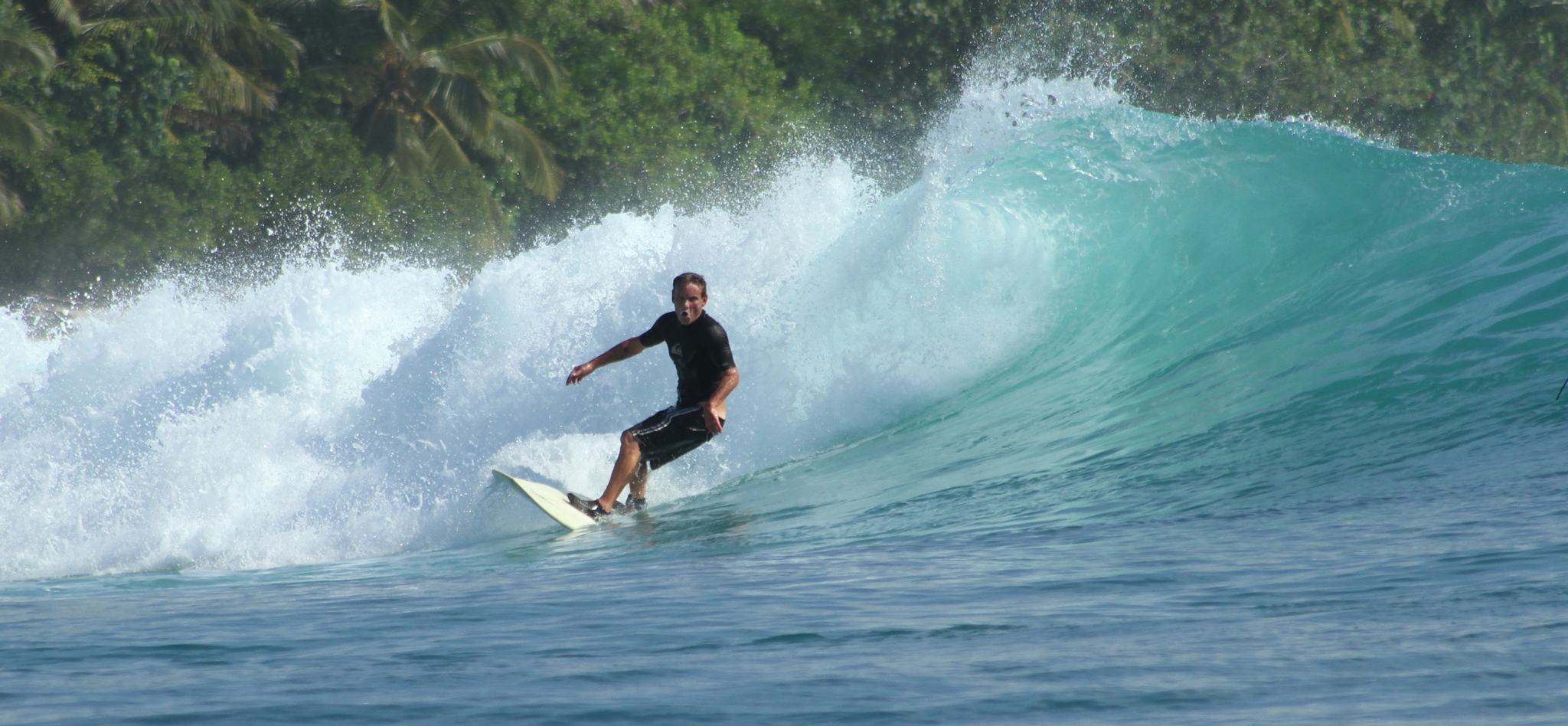
I had an epiphany sitting in that little wooden boat out in the Indian Ocean. I wasn’t 30 and bulletproof anymore, I was nearly 60. That set had physically and mentally knocked the crap out of me and I had to accept that this “Average Joe” would have to surf within his limitations. Hideaways at 4ft packs a punch but is still playful. She’s a different kettle of fish altogether when hunkering in at 6-8ft.
I was still digging bits of that reef out of my knee two weeks after getting back to New Zealand. You gotta pay to play certainly seemed to ring true.
I had an epiphany sitting in that little wooden boat out in the Indian Ocean. I wasn’t 30 and bulletproof anymore, I was nearly 60. That set had physically and mentally knocked the crap out of me and I had to accept that this “Average Joe” would have to surf within his limitations.
Were the Mentawais worth it? The 50+ hours of traveling and sleep deprivation? The six plane flights? The insanity of Sumatran buses, ferries, taxis and canoes? Sprinting with surfboards through insanely crowded and huge airports trying not to miss our connecting flights? The deliciously filthy Sumatran cities? The hours of sweating while canoeing through humid, never ending mangrove swamp?
You bet it was …
